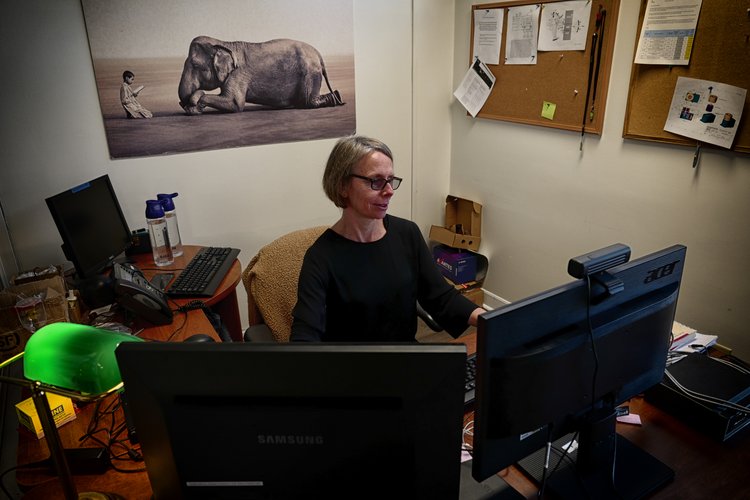See This Report about Olis Clarity
Wiki Article
Excitement About Olis Clarity
Whichever wavelength selector is used in the spectrophotometer, the light then travels through an example. For all analyses, determining a reference example, typically described as the "blank example", such as a cuvette loaded with a comparable solvent made use of to prepare the sample, is critical. If an aqueous buffered solution having the example is utilized for dimensions, then the liquid buffered solution without the compound of passion is made use of as the recommendation.

The reference example signal is then later used instantly by the tool to aid get real absorbance worths of the analytes (https://hearthis.at/julie-ann-desa-lorenz/set/julie-ann-desa-lorenz/). It is essential to be mindful of the materials and problems utilized in UVVis spectroscopy experiments - UV/Vis. As an example, the majority of plastic cuvettes are unacceptable for UV absorption research studies because plastic generally soaks up UV light.
Quartz sample owners are required for UV assessment because quartz is clear to the majority of UV light. Air may additionally be believed of as a filter because wavelengths of light much shorter than about 200 nm are soaked up by molecular oxygen airborne. A special and much more pricey arrangement is required for dimensions with wavelengths much shorter than 200 nm, typically involving an optical system loaded with pure argon gas.
Olis Clarity Fundamentals Explained
After the light has passed through the sample, a detector is used to convert the light into a readable electronic signal. A photoelectric layer expels adversely billed electrons when subjected to light.
The fraction I split by Io is likewise called transmittance (T), which reveals exactly how much light has gone through a sample. Beer, Lambert's law is commonly used to acquire the concentration of the sample (c) after measuring the absorbance (A) when the molar absorptivity () and the path size (L) are recognized.
The term optical thickness (OD) is sometimes incorrectly used interchangeably with absorbance. OD and absorbance both gauge the quantity of light intensity shed in an optical element, but OD considers loss from light scattering whereas absorbance does not. If really little light spreading is existing in a measurement, after that OD may be approximated straight using absorbance and Beer, Lambert's law might be used.
4 Simple Techniques For Olis Clarity
Cuvettes designed for a 1 centimeters course length are conventional and are most usual. Sometimes, very little sample is offered for examination and shorter path sizes as tiny as 1 mm are required. https://julieanndesalorenz.wixsite.com/olis-clarity/post/breaking-boundaries-olis-clarity-s-revolution-in-circular-dichroism-and-circularly-polarized-lumine. Where quantitation is required, absorbance worths need to be maintained listed below 1, within the dynamic variety of the tool
With such little light reaching the detector, some UVVis spectrophotometers are not sensitive enough to evaluate little quantities of light dependably. 2 simple feasible solutions to this issue are to either dilute the sample or lower the path length. As mentioned above, videotaping a baseline spectrum making use of a "blank" recommendation option is vital.
In an actual situation, nevertheless, the standard spectrum will typically have some really tiny positive and unfavorable absorbance worths. For best method, these small absorbance values are often immediately subtracted from the example absorbance values for each wavelength of light by the software application to get the real absorbance values. 1Depending on the purpose of the analysis, the building and construction of a calibration contour might be preferable.
What Does Olis Clarity Do?

If the slope is steeper, the level of sensitivity is greater. Level of sensitivity is the capacity to differentiate between the small differences in the example focus. From Beer, Lambert's Regulation, the level of sensitivity can be partly shown by the molar absorptivity. Knowing the values ahead of time, if available, can help to establish the focus of the examples required, especially where examples are minimal or pricey.
When duplicating the exam of an example, as a whole, a minimum of 3 replicate tests is usual, however a lot more reproduces are needed in certain areas of work (https://sitereport.netcraft.com/?url=https://olisclarity.com). A calculated quantity, such as the concentration of an unknown sample, is normally reported as a typical with a basic variance. Reproducible outcomes are important to make sure exact, high top quality dimensions
A reduced inconsistency or variant shows a greater degree of accuracy and dependability. No single method is best and UVVis spectroscopy is no exception. The method does, however, have a few main staminas provided below that make it prominent. The strategy is nondestructive, allowing the sample to be reused or proceed to further processing or analyses.
Indicators on Olis Clarity You Need To Know
Look At This1 Light scattering - Light scattering is frequently brought on by suspended solids in liquid samples, which might cause significant measurement mistakes. The presence of bubbles in the cuvette or example will scatter light, causing irreproducible results. Disturbance from multiple soaking up species - An example may, as an example, have multiple sorts of the environment-friendly pigment chlorophyll.
For an appropriate measurable analysis, each chemical types need to be separated from the sample and taken a look at individually. Geometrical considerations - Misaligned positioning of any kind of one of the instrument's elements, specifically the cuvette holding the example, may produce irreproducible and inaccurate results. Consequently, it is very important that every element in the tool is aligned in the same orientation and is placed in the same setting for every single measurement.
UVVis has found itself put on numerous uses and circumstances including however not limited to: Rapidly confirming the purity and concentration of RNA and DNA is one especially widespread application. UV/Vis. A recap of the wavelengths used in their analysis and what they indicate are offered in Table 1. When preparing DNA or RNA examples, for instance for downstream applications such as sequencing, it is commonly important to validate that there is no contamination of one with the various other, or with healthy protein or chemicals rollovered from the seclusion procedure
Report this wiki page